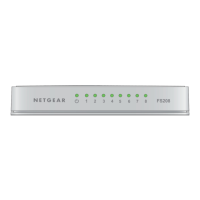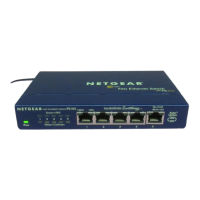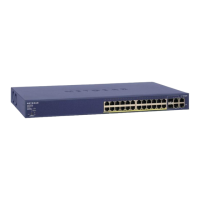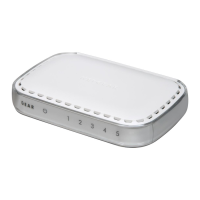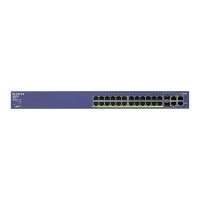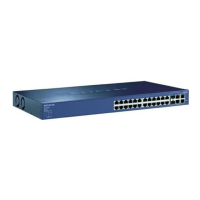Page 102 of 121
IEEE
Institute of Electrical and Electronics Engineers. This American
organization was founded in 1963 and sets standards for computers
and communications.
IETF
Internet Engineering Task Force. An organization responsible for
providing engineering solutions for TCP/IP networks. In the network
management area, this group is responsible for the development of the
SNMP protocol.
IGMP
Internet Group Management Protocol, the standard for IP multicasting in
the Internet. IGMP is used to establish host memberships in multicast
groups on a single network. (See IP multicast)
IP
Internet Protocol. IP is a layer 3 network protocol that is the standard for
sending data through a network. IP is part of the TCP/IP set of protocols
that describe the routing of packets to addressed devices.
IP address
Internet Protocol address. A unique identifier for a device attached to a
network using TCP/IP. The address is written as four octets separated
with periods (full-stops), and is made up of a network section, an
optional subnet section and a host section.
IP multicast
Sending data to distributed servers on a multicast backbone. For large
amounts of data, IP Multicast is more efficient than normal Internet
transmissions, because the server can broadcast a message to many
recipients simultaneously. Unlike traditional Internet traffic that requires
separate connections for each source-destination pair, IP multicasting
allows many recipients to share the same source. This means that just
one set of packets is transmitted for all the destinations.
LAN
Local Area Network. A network of end stations (such as PCs, printers,
servers) and network devices (hubs and switches) that cover a relatively
small geographic area (usually not larger than a floor or building).
Load balancing
The ability to distribute traffic across various ports of a device, such as a
switch, to provide efficient, optimized traffic throughout the network.
Loop
An event that occurs when two network devices are connected by more
than one path, thereby causing packets to repeatedly cycle around the
network and not reach their destination.
MAC
Media Access Control. A protocol specified by the IEEE for determining
which devices have access to a network at any one time.
MAC address
Media Access Control address; also called hardware or physical
address. Most devices that connect to a LAN have a MAC address
assigned to them, as they are used to identify other devices in a
network.
Multicast
A single packet sent to a specific group of end stations on a network.
Port monitoring
The ability to monitor the traffic passing through a port on a device to
analyze network characteristics and perform troubleshooting.
Port speed
The speed that a port on a device uses to communicate with another
device or the network.
Port trunking
The ability to combine multiple ports on a device to create a single,
high-bandwidth connection.
Protocol
A set of rules for communication between devices on a network.
Quality of Service
A term to describe delay, throughput, bandwidth, and other factors that
measure the service quality provided to a user.
Segment
A section of a LAN that is connected to the rest of the network using a
switch, bridge, or repeater.
SNMP
Simple Network Management Protocol. An IETF standard protocol for
managing devices on a TCP/IP network.
Spanning Tree
A technique that detects loops in a network and logically blocks the
redundant paths, ensuring that only one route exists between any two
LANs.
Spanning Tree Protocol (STP)
A protocol that finds the most efficient path between segments of a
multi-looped, bridged network. STP allows redundant switches and
bridges to be used for network resilience, without the broadcast storms
associated with looping. If a switch or bridge falls, a new path to a
redundant switch or bridge is opened.
Switch
A device that interconnects several LANs to form a single logical LAN
that comprises of several LAN segments. Switches are similar to
bridges, in that they connect LANs of a different type; however they
connect more LANs than a bridge and are generally more sophisticated.
TCP/IP
Transmission Control Protocol/Internet Protocol. This is the name for
two of the most well known protocols developed for the interconnection
of networks. Originally a UNIX standard, TCP/IP is now supported on
almost all platforms, and is the protocol of the Internet.

